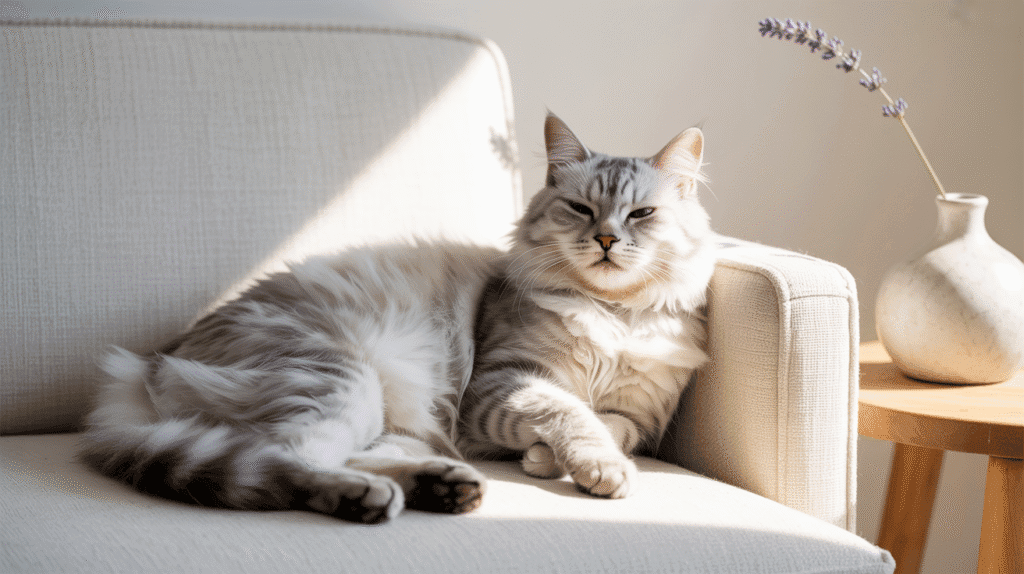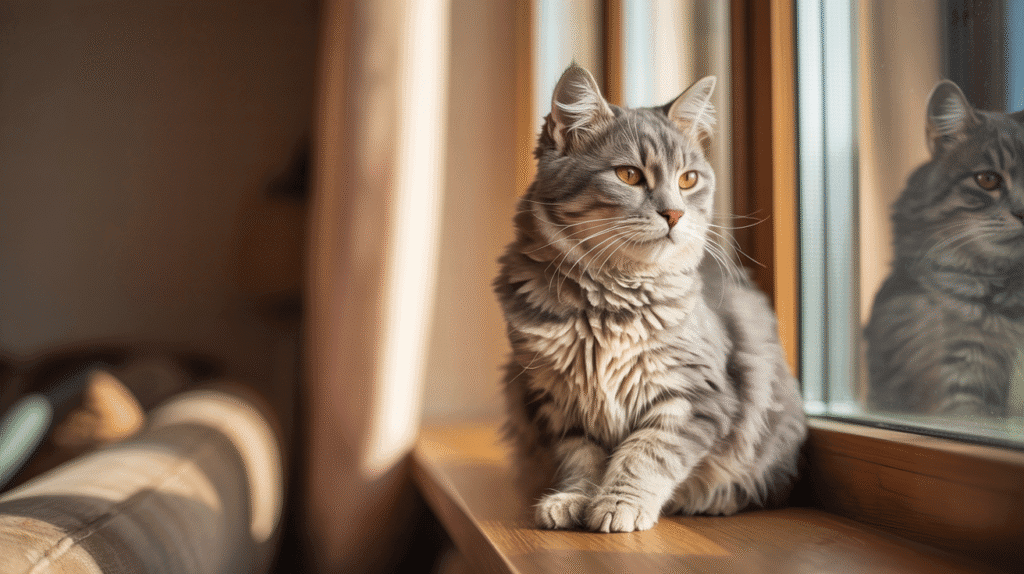
A cat that’s purring while hiding could be asking for help.
Cats purr when they’re curled up on our laps, but they also purr in moments that feel confusing—like at the vet or when they seem stressed. That sound we often take as pure happiness isn’t always about joy.
Sometimes, it’s a survival tool, a request, or even a quiet sign that something’s wrong. Understanding the different meanings behind a purr can change the way you care for your cat.
Anúncio
Purring is more like a language than a single emotion. When a cat hops on your lap, curls its tail around, and purrs softly, that’s usually contentment. But if the body is stiff, ears pulled back, or eyes wide open, the same sound may carry stress or fear. Cats also purr as a way to ask for something—like food or attention—often pairing the sound with meows or nudges. In short, the meaning changes with posture, eyes, tail, and situation. Reading those clues makes all the difference.

Behind that cozy rumble is a pretty amazing science fact: cats purr in the 25–150 Hz range. Studies suggest these low vibrations can reduce stress, lower blood pressure, and even promote tissue healing. That’s why some people call it a built‑in “healing frequency.”
But here’s the twist 🌀: cats also purr when they’re in pain or scared. Experts believe the vibrations help them self‑soothe or even speed recovery from injuries. So the same sound that comforts us may also be your cat’s way of comforting itself.
Think of it like this:
It’s not always simple joy—it’s biology, survival, and emotion all rolled into one.
Everyday situations can flip the meaning of a purr. Here’s a quick cheat sheet 🐾:
| Situation | Likely Meaning | How You Can Respond |
|---|---|---|
| At the vet, hiding | Stress or discomfort | Offer calm, quiet, and check with vet |
| Kneading on your lap | Bonding, comfort, or marking you | Enjoy the moment—maybe trim nails 😉 |
| Curled up, relaxed | Pure contentment | Pet gently, enjoy the bonding |
| While nursing | Survival & connection with mom | Natural behavior, no action needed |
| After injury/pain | Self‑soothing, possible healing | Monitor closely, call vet if ongoing |
👉 Use this as a starting point, but always pair the purr with body language: tail, ears, and eyes will give you the full picture.
Most of the time, purring is safe and sweet. But sometimes it’s a warning signal 🚨. Cats may purr when they’re hurt or anxious, trying to calm themselves down. Watch for these red flag combos:
👉 If you notice these signs, especially if the behavior is new or intense, it’s time to call the vet. Better safe than sorry when it comes to hidden pain.
Once you know the “dialects” of the purr, you can react in ways that actually help your cat 🐾:
👉 The key is context. Same sound, different meaning. The closer you pay attention, the more fluent you become in “cat language.”
A cat’s purr is not just background noise – it’s a conversation starter. Sometimes it’s love, sometimes it’s a request, and sometimes it’s a silent signal that your cat needs help. By pairing the sound with body language and context, you start to unlock a whole new level of connection. 💛
Think of each purr as a clue in your cat’s personal diary. The more you listen, the more you’ll understand—and the stronger your bond will grow.
Most of the time, purring during petting is a sign of contentment and bonding. Your cat feels safe and connected to you. As long as their body is relaxed, it’s a happy sound.
Yes. Cats may purr when they’re hurt, anxious, or sick. It’s believed to be a self‑soothing mechanism, and in some cases, the vibrations may even help healing. If the purring comes with hiding, stiffness, or rapid breathing, consult your vet.
Absolutely. Cats often use purring as a way to get attention or request something. A hungry cat, for example, might mix a purr with a short meow to signal feeding time.
Not always. While purring often means relaxation, it can also be linked to stress, fear, or discomfort. Context and body language are the keys to telling the difference.
Research suggests that the low‑frequency vibrations of a cat’s purr (25–150 Hz) may help reduce pain, improve bone density, and speed healing. While not a replacement for veterinary care, it’s a fascinating bonus of sharing life with a cat.